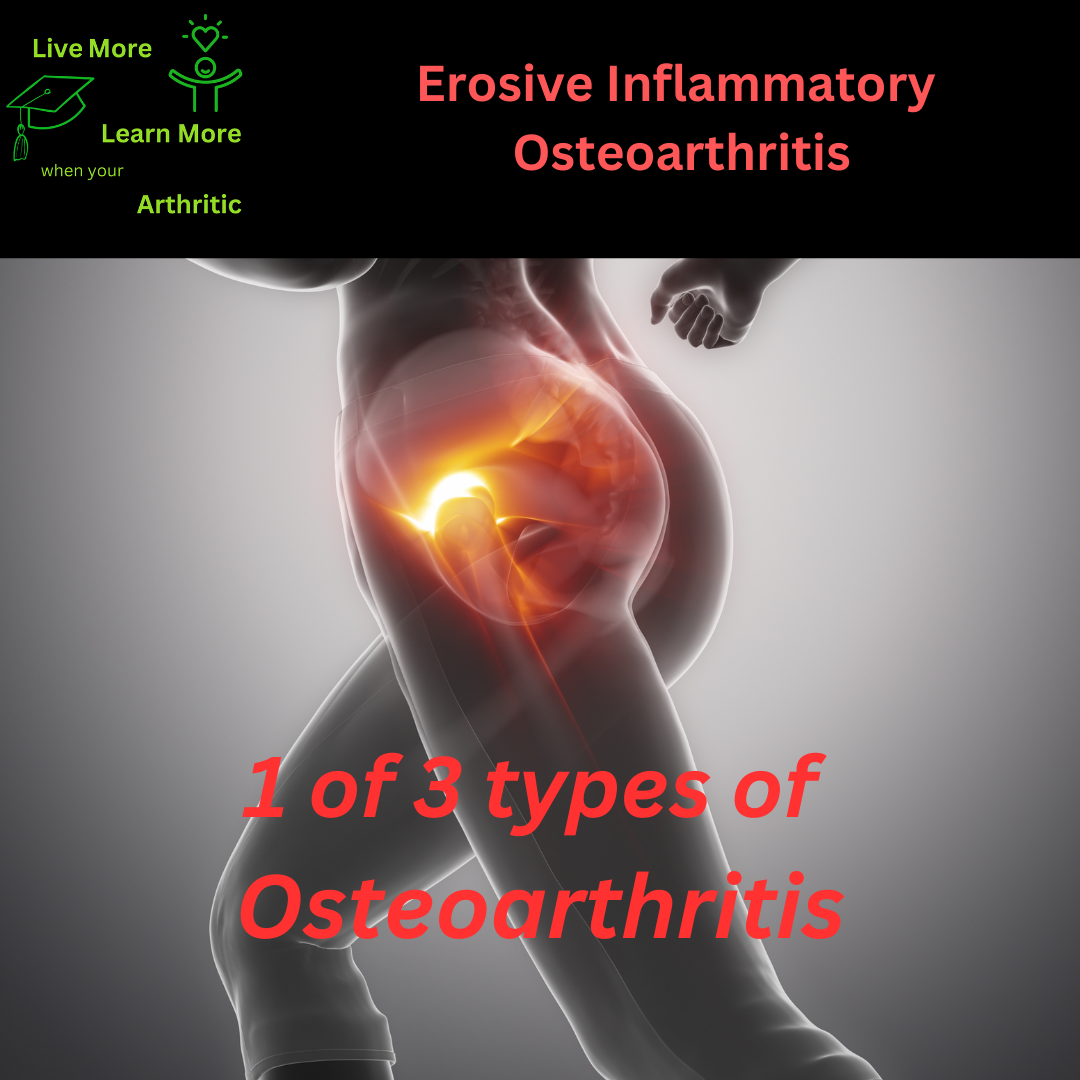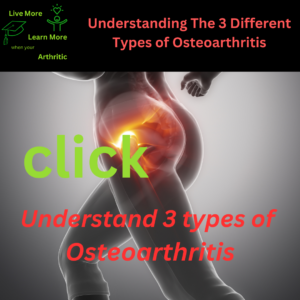
Erosive Inflammatory Osteoarthritis: 1 of 3 types of Osteoarthritis
Understanding Erosive Inflammatory Osteoarthritis
Erosive Inflammatory Osteoarthritis (EOA) is a unique and challenging form of arthritis that combines features of both osteoarthritis (OA) and inflammatory arthritis. Unlike typical OA, which is primarily characterized by wear-and-tear on joints, EOA involves inflammation that leads to erosion of joint tissues, particularly cartilage and bone.
Here are the links to each remaining Osteoarthritis article covered in this 4 part series:
EOA is marked by joint pain, stiffness, and swelling, similar to other forms of arthritis. However, what sets EOA apart is the presence of inflammatory changes that cause damage to joint structures. Over time, this erosion can lead to significant joint deformities and functional impairments.
Causes and Triggers
The exact causes of EOA are not fully understood, but it is believed to result from a combination of genetic predisposition and environmental factors. Factors such as joint injury, obesity, and repetitive stress on joints may trigger or exacerbate the inflammatory response seen in EOA.
Affect Joints
Erosive Inflammatory Osteoarthritis (EOA) can affect various joints in the body, with certain joints being more commonly impacted than others. The severity and progression of joint involvement can vary from person to person, but here is a general order of the most commonly affected joints:
- Hands and Fingers: The joints of the hands and fingers are frequently affected by EOA, including the distal interphalangeal (DIP) joints, proximal interphalangeal (PIP) joints, and thumb base. This can lead to deformities such as swan-neck or boutonniere deformities.
- Feet: The joints of the feet, particularly the metatarsophalangeal (MTP) joints, can also be affected by EOA. This may result in pain, swelling, and difficulty walking.
- Knees: EOA can cause inflammation and erosion in the knee joints, leading to stiffness and reduced mobility.
- Hips: Although less common than hand and foot involvement, EOA can affect the hip joints, causing pain and restricted movement.
- Spine: In some cases, EOA can involve the spine, leading to inflammation of the facet joints or vertebral bodies.
Symptoms and Limited Range of Motion
Symptoms of EOA include:
- Persistent joint pain
- Swelling and tenderness around affected joints
- Stiffness, especially in the morning or after periods of inactivity
- Decreased range of motion due to joint damage
The limited range of motion is a hallmark feature of EOA, making everyday tasks challenging and affecting overall quality of life.
Onset Age and Lifespan Impact
EOA typically affects individuals in their 40s to 60s, but onset can occur earlier in some cases. Unfortunately, EOA can lead to decreased life expectancy due to complications such as joint deformities, cardiovascular issues, and overall decline in physical health.
Autoimmune Nature and Risk Factors
EOA is not considered a classic autoimmune disease like rheumatoid arthritis (RA), but it involves an inflammatory response similar to autoimmune conditions. Risk factors for EOA include genetics, joint trauma, obesity, and certain occupations that involve repetitive joint stress.
Complications
Complications of EOA can include:
- Severe joint deformities
- Chronic pain and disability
- Increased risk of cardiovascular disease
- Decreased mobility and independence
Role of Swelling and Inflammation
Swelling and inflammation are central to EOA, contributing to joint damage and pain. Inflammation in EOA is triggered by an immune response that targets joint tissues, leading to erosion and degradation of cartilage and bone.
Impact on Range of Motion
EOA can result in progressive loss of joint function and range of motion due to joint damage and deformities. As the disease advances, joints become increasingly stiff and immobile, making it difficult to perform daily activities.
Improving Quality of Life with a Proactive Approach
Although EOA presents significant challenges, a proactive approach can help improve quality of life. This includes:
- Regular exercise to maintain joint flexibility and strength
- Weight management to reduce stress on affected joints
- Physical therapy to optimize mobility and function
- Assistive devices and adaptive strategies for daily activities
Interconnected Diseases and Conditions
Individuals with EOA may be at increased risk for developing related conditions, including:
- Cardiovascular diseases due to chronic inflammation
- Metabolic syndrome and diabetes
- Depression and anxiety related to chronic pain and disability
EOA affects both men and women, but some studies suggest a slightly higher prevalence in women. The condition primarily manifests in middle-aged to older adults, with symptoms often appearing in the fifth and sixth decades of life.
In summary, Erosive Inflammatory Osteoarthritis presents a complex blend of inflammatory and degenerative joint changes, impacting individuals’ quality of life and longevity. While there is no cure, proactive management strategies can help alleviate symptoms, maintain function, and minimize complications associated with this challenging condition. Early diagnosis and comprehensive care are crucial for optimizing outcomes and empowering individuals to live well with EOA.
Enjoy read 4 more articles about Osteoarthritis:



